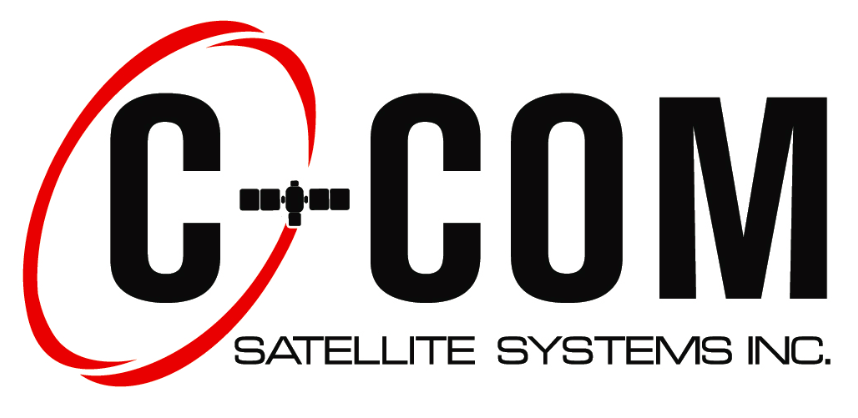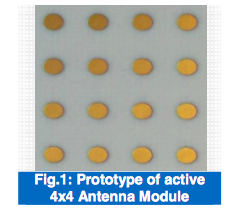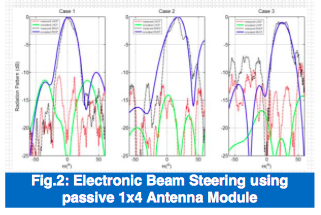
The antenna's modularity is able to conform to curved surfaces enabling broadband high speed communications into vehicles, boats, ships, trains, buses and aircraft.
C-COM Satellite Systems Inc., (TSXV: CMI) announces that it has successfully tested its first Ka-band phased array modules based on the company’s patent pending phase shifter technology. The 4x4 sub-array antenna module technology has been developed in partnership with the University of Waterloo at its Centre for Intelligent Antenna and Radio Systems (CIARS) under the guidance of Dr. Safieddin (Ali) Safavi-Naeini, director of (CIARS).
This new phased array/phase shifting technology should have a significant impact on the satellite antenna business moving forward. This development will make it possible to deploy low cost, low weight, low profile Ku-, Ka- or hybrid Ku-/Ka-band antenna system combinations for fixed and mobile satellite broadband communication applications.
Due to the antenna’s expected modularity and ability to conform to curved surfaces, it will be possible to deliver broadband high speed communications into vehicles, (connected cars), boats, ships, trains, buses and aircraft at reasonable prices and with reduced form factor. This new antenna system and its extension to higher millimeter-wave band will also be able to be deployed in telecommunications for the next generation 5G mobile cellular and millimeter-wave automotive radar.
A working prototype of a 4x4 Ka-band intelligent antenna module, (the size of a business card) shown in Fig.1, employs a low-cost multi-layer planar circuit, based on an innovative architecture that is highly flexible, thin, modular, conforming and adaptive. The initial results of this innovative architecture are very promising. The tests showed that even with a few of the antenna elements turned-off, the module can still deliver an acceptable radiation pattern, without significant performance degradation. This is essential in situations when one or a few of the many elements of the active devices may have failed.

“This ‘graceful degradation’ is another unique advantage of the intelligent array systems, which have been implemented at the smallest module (building block) of this novel architecture,” said Dr. Ali Safavi-Naeini.
Another 1x4 prototype passive phased array module (designed without any active components) was also tested and validated for Ka-band electronic beam steering capability using the C-COM patented engineered material phase shifter technology. (Fig.2).
Results clearly showed that electronic beam steering of up to 30 degrees from the normal direction with minimal impact on the beam shape is possible using an extremely simple and low cost structure consisting of the patent pending phase shifter. No active devices were required to accomplish this task and there was no need to adjust the antenna excitation amplitude.

Fig.1: Prototype of active 4x4 Antenna Module
“Low insertion loss of the patented phase shifter over the entire range of the phase shift and operational frequency band opens up, for the first time, an exciting new possibility for developing high-performance, passive phased array systems, without the need of active devices between the phase-shifters and antenna elements.
This transformative concept will significantly reduce the cost and complexity of phased array systems and hugely expand the phased array market for flat panel mobile antennas,” continued
Fig.2: Electronic Beam Steering using passive 1x4 Antenna Module
Prof. Ali Safavi-Naeini. “We are very excited about this new Ka-band antenna technology development and its potential application to expand the addressable markets for electronically steerable flat panel satellite antennas,” said Bilal Awada, CTO of C-COM Satellite Systems Inc. “The 4x4 phased array modular approach provides the basic building blocks required to manufacture new Ka-band antenna designs of various shapes and sizes for fixed and mobile applications,” continued Awada.
“These test results confirm that the technology can now be advanced to develop a high volume manufacturable product line of intelligent antenna systems in Ka and Ku-band frequencies and beyond,“ said Dr. Leslie Klein, CEO of C-COM Satellite Systems Inc. “It is a potential game changer for the mobile broadband satellite market—whether land-based, maritime or airborne— as well as for next generation 5G mobile cellular communications.”
“As a research-intensive institution, we encourage industry collaboration as a means to advance technology through a mutually-beneficial partnership,” said Dave Dietz, Director of Research for the Faculty of Engineering. “With over 600 successful spin-off companies generated from the Waterloo University over the past few years, we see a great potential for more spin-off from this new technology given the wide diversity for its use”.
The research work was funded by C-COM, Ontario Centre of Excellence, Industrial Research Assistance Program (IRAP) and Natural Sciences and Engineering Research Council of Canada (NSERC). “We look forward to continuing our collaboration with the University of Waterloo, OCE, IRAP and NSERC on this innovative phased array antenna technology the result of which will be a high volume, flat panel electronically steerable antenna product,” said Dr. Klein, CEO of C-COM Satellite Systems Inc.
C-Com Satellite Systems:
C-Comsat.com

